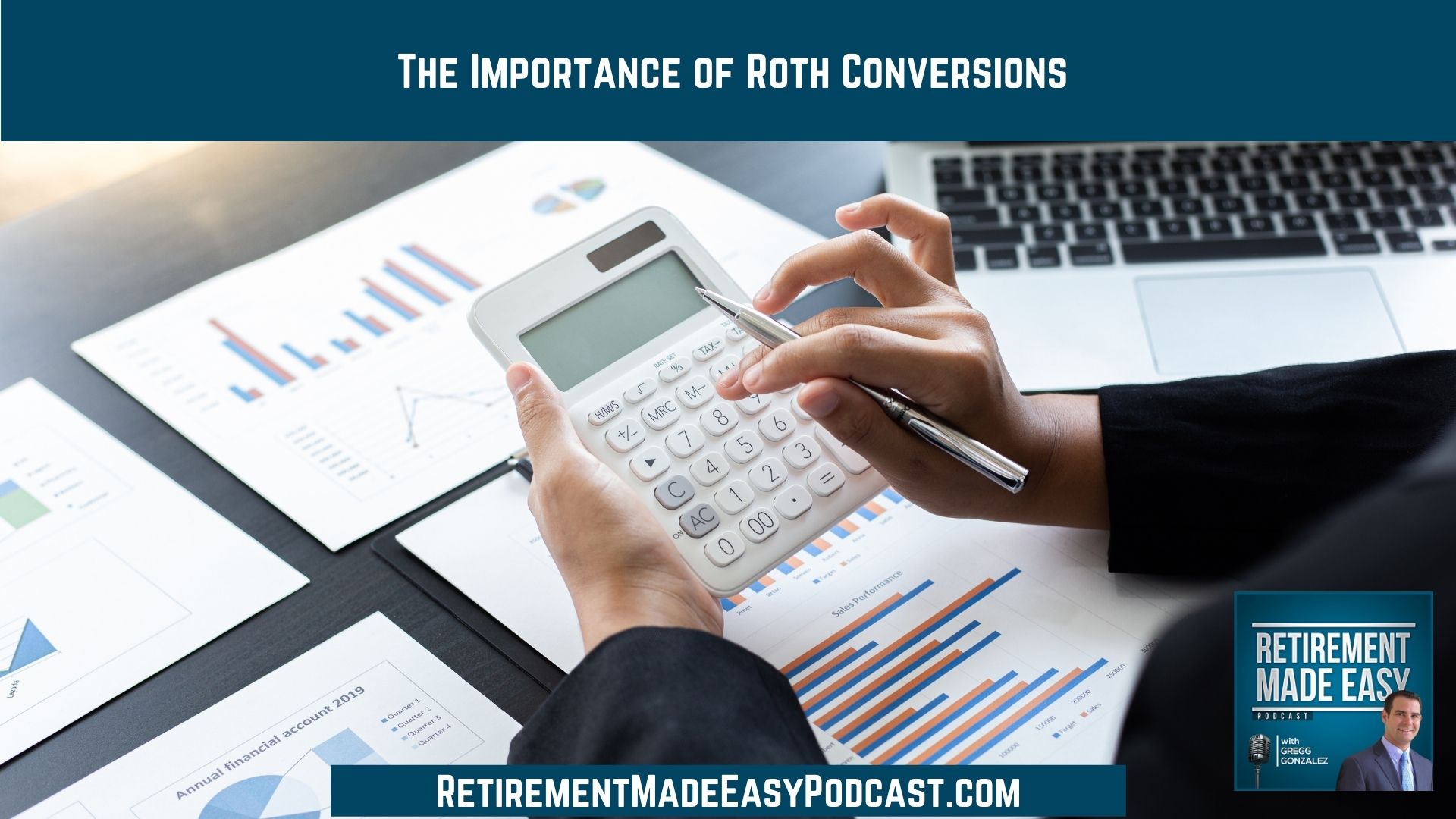
Roth conversions are a useful tool that you should consider taking advantage of as you approach retirement. If you have a Roth IRA, it would grow tax-free for life. When you take withdrawals in retirement, they will be tax-free. With a traditional IRA, you pay taxes whenever you take withdrawals. So if you take a $5,000 withdrawal, you have to pay Federal and State income taxes. But when should you start doing Roth conversions? Listen to this episode of Retirement Made Easy to hear my thoughts.
You will want to hear this episode if you are interested in…
- [3:20] How to get a FREE retirement assessment
- [5:26] Why I don’t talk about cryptocurrency
- [8:52] What you need to know about the Secure Act 2.0
- [15:12] The basics of Roth conversions
What you need to know about the Secure Act 2.0
The Secure Act 2.0 will likely pass in the senate with minor changes. Here’s what you need to know.
If a student is paying toward student loan debt, their company can “match” that payment and contribute it to the student’s 401k—even if the student isn’t directly contributing any money to the 401k. Employers are being incentivized to help students pay off loans.
If you contribute to a 401k and you’re over 50, the most you can currently contribute is up to $27,000 per year. Part of it is the $6,5000 catch-up allowed when you turn 50 (If you’re under 50, you can contribute $20,500) The catch-up allowance will be increased from $6,500 to $10,000 for anyone 60 or older.
Currently, once you turn 72, you must start taking required minimum distributions from your IRA and pay taxes on the money. This bill will change the age requirement gradually. By 2032, the RMD age will be 75. This gives people three more years where they aren’t forced to pay taxes on RMDs.
This bill is huge. It will allow you more time for your money to grow tax-deferred. Who wouldn’t want an extra three years? You can also use those three extra years to do Roth conversions in a lower tax bracket.
The basics of Roth conversions
Kathy is in her early 50s and her husband is in his mid-fifties. They’re trying to figure out if they should wait until later in life to start doing Roth conversions. Kathy’s husband will likely retire in five years, but she wants to work a few more years. When does it make sense to do Roth conversions?
The first question I’d ask is, what will your income bracket be now, next year, or in five years? If you’re moving to states like FL, TN, or TX that don’t have state income tax, you will not have to pay income tax on those Roth conversions. It may make sense to wait to do Roth conversions until you’re an official resident of one of those states.
Keep in mind that in 2026, the 2017 Tax Cuts and Jobs Act will end. This means that tax rates will become higher. The 12% tax rate will increase to 15%. The 22% bracket will jump to 25%. The 24% will jump to 28%. When you look at doing Roth conversions, you want to maximize how much you can convert but still stay within your current tax bracket. It’s a calculated and precise process that is best executed when done by a professional.
Roth IRAs allow you the ability to have control over your lifetime tax liability. You’re never forced to take distributions and when you do, they’re tax-free. This gives you a say over how your income is taxed in the future. The Roth IRA is a powerful tool. Listen to the whole episode to learn more!
Resources & People Mentioned
- Get a FREE retirement assessment
- Check out the resources on our website
- The National Study of Millionaires
Connect With Gregg Gonzalez
- Email at: Gregg@RetireSTL.com
- Podcast: https://RetirementMadeEasyPodcast.com
- Website: https://StLouisFinancialAdvisor.com
- Follow Gregg on LinkedIn
- Follow Gregg on Facebook
- Follow Gregg on YouTube



